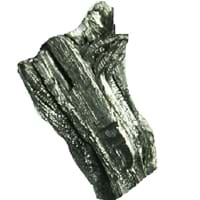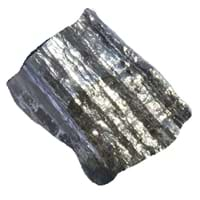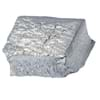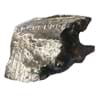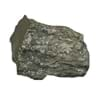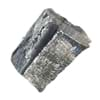Dysprosium vs Molybdenum
Periodic Table
Symbol
Dy
Mo
Group Number
Not Available
6
12
Period Number
6
5
Block
f block
d block
Element Family
Lanthanide
Transition Metal
CAS Number
7429916
99+
7439987
99+
Space Group Name
P63/mmc
Im_ 3m
Space Group Number
194.00
5
229.00
1
Facts
Interesting Facts
- Dysprosium acts stable in air at room temperature.
- Dysprosium behaves very much like paramagnetic metal.
- Molybdenum is highly reactive metal, hence not found free in nature .
- Till 18th century Molybdenum element were often mistaken as a carbon or Lead.
Sources
Found in Minerals, Mining, Ores of Minerals
Found in Minerals, Mining, Ores of Minerals
History
Who Discovered
Lecoq de Boisbaudran
Carl Wilhelm Scheele
Discovery
In 1886
In 1778
Abundance
Abundance In Universe
2 * 10-7 %
22
5 * 10-7 %
19
Abundance In Sun
~0.0000002 %
25
~0.0000009 %
19
Abundance In Meteorites
0.00 %
33
0.00 %
24
Abundance In Earth's Crust
0.00 %
28
0.00 %
39
Abundance In Oceans
0.00 %
35
0.00 %
9
Abundance In Humans
Not Available
0.00 %
14
Uses
Uses & Benefits
- Dysprosium metal is highly reactive due to which it pure form is not as usual as its alloy.
- Thi metals alloy is used in magnate as it is resistance to high temperature.
- Its alloys are used to make engine parts, drills, saw blade, etc.
- Lubricant additive made up of Molybdenum disulfide is commonly used in the industry. It is also used as a catalyst.
Industrial Uses
NA
Aerospace Industry, Electrical Industry, Electronic Industry
Medical Uses
NA
NA
Other Uses
Alloys, Nuclear Research
Alloys
Biological Properties
Toxicity
Mildly Toxic
Toxic
Present in Human Body
No
Yes
In Blood
Not Available
0.00 Blood/mg dm-3
31
In Bone
Not Available
0.70 p.p.m.
18
Physical Properties
Melting Point
1,407.00 °C
32
2,617.00 °C
5
Boiling Point
2,562.00 °C
99+
4,612.00 °C
9
Appearance
Physical State
Solid
Solid
Color
Silvery White
Gray
Luster
Metallic
Metallic
Hardness
Mohs Hardness
Not Available
5.50
7
Brinell Hardness
500.00 MPa
23
1,370.00 MPa
7
Vickers Hardness
540.00 MPa
20
1,400.00 MPa
6
Speed of Sound
2,710.00 m/s
33
5,400.00 m/s
6
Optical Properties
Reflectivity
Not Available
58.00 %
15
Allotropes
No
No
α Allotropes
Not Available
Not Available
β Allotropes
Not Available
Not Available
γ Allotropes
Not Available
Not Available
Chemical Properties
Chemical Formula
Dy
Mo
Isotopes
Known Isotopes
29
10
25
14
Electronegativity
Pauling Electronegativity
1.22
38
2.16
5
Sanderson Electronegativity
Not Available
1.15
19
Allred Rochow Electronegativity
1.10
30
1.30
24
Allen Electronegativity
Not Available
2.16
3
Electropositivity
Pauling Electropositivity
2.78
16
1.84
99+
Ionization Energies
1st Energy Level
573.00 kJ/mol
99+
684.30 kJ/mol
37
2nd Energy Level
1,130.00 kJ/mol
99+
1,560.00 kJ/mol
37
3rd Energy Level
2,200.00 kJ/mol
99+
2,618.00 kJ/mol
99+
4th Energy Level
3,990.00 kJ/mol
37
4,480.00 kJ/mol
26
5th Energy Level
Not Available
5,257.00 kJ/mol
32
6th Energy Level
Not Available
6,640.80 kJ/mol
22
7th Energy level
Not Available
12,125.00 kJ/mol
13
8th Energy Level
Not Available
13,860.00 kJ/mol
16
9th Energy Level
Not Available
15,835.00 kJ/mol
16
10th Energy Level
Not Available
17,980.00 kJ/mol
18
11th Energy Level
Not Available
20,190.00 kJ/mol
17
12th Energy Level
Not Available
22,219.00 kJ/mol
15
13th Energy Level
Not Available
26,930.00 kJ/mol
13
14th Energy Level
Not Available
29,196.00 kJ/mol
13
15th Energy Level
Not Available
52,490.00 kJ/mol
7
16th Energy Level
Not Available
55,000.00 kJ/mol
8
17th Energy Level
Not Available
61,400.00 kJ/mol
9
18th Energy Level
Not Available
67,700.00 kJ/mol
9
19th Energy Level
Not Available
74,000.00 kJ/mol
9
20th Energy Level
Not Available
80,400.00 kJ/mol
10
21st Energy Level
Not Available
87,000.00 kJ/mol
9
22nd Energy Level
Not Available
93,400.00 kJ/mol
7
23rd Energy Level
Not Available
98,420.00 kJ/mol
6
24th Energy Level
Not Available
104,400.00 kJ/mol
2
25th Energy Level
Not Available
121,900.00 kJ/mol
1
26th Energy Level
Not Available
127,700.00 kJ/mol
1
27th Energy Level
Not Available
133,800.00 kJ/mol
1
28th Energy Level
Not Available
139,800.00 kJ/mol
1
29th Energy Level
Not Available
148,100.00 kJ/mol
1
30th Energy Level
Not Available
154,500.00 kJ/mol
1
Electrochemical Equivalent
2.02 g/amp-hr
29
0.89 g/amp-hr
99+
Electron Work Function
Not Available
4.60 eV
12
Other Chemical Properties
Anti Corrosion, Ionization, Radioactive Isotopes, Solubility
Anti Corrosion, Ionization, Radioactive Isotopes, Solubility
Atomic Properties
Atomic Number
66
99+
42
99+
Electron Configuration
[Xe] 4f9 6s2
[Kr] 4d5 5s1
Crystal Structure
Hexagonal Close Packed (HCP)
Body Centered Cubic (BCC)
Crystal Lattice
HCP-Crystal-Structure-of-Dysprosium.jpg#100
BCC-Crystal-Structure-.jpg#100
Atom
Number of Protons
66
99+
42
99+
Number of Neutrons
96
35
54
99+
Number of Electrons
66
99+
42
99+
Radius of an Atom
Atomic Radius
178.00 pm
16
139.00 pm
39
Covalent Radius
192.00 pm
17
154.00 pm
32
Van der Waals Radius
229.00 pm
20
200.00 pm
28
Atomic Weight
162.50 amu
99+
95.95 amu
99+
Atomic Volume
19.00 cm3/mol
23
9.40 cm3/mol
99+
Adjacent Atomic Numbers
Valence Electron Potential
47.40 (-eV)
32
88.60 (-eV)
13
Lattice Constant
359.30 pm
37
314.70 pm
99+
Lattice Angles
π/2, π/2, 2 π/3
π/2, π/2, π/2
Lattice C/A Ratio
1.57
15
Not Available
Mechanical Properties
Density
Density At Room Temperature
8.54 g/cm3
99+
10.28 g/cm3
36
Density When Liquid (at m.p.)
8.37 g/cm3
25
9.33 g/cm3
20
Tensile Strength
120.00 MPa
15
324.00 MPa
13
Viscosity
Not Available
Not Available
Vapor Pressure
Vapor Pressure at 2000 K
Not Available
0.00 (Pa)
26
Elasticity properties
Shear Modulus
24.70 GPa
31
126.00 GPa
8
Bulk Modulus
40.50 GPa
31
230.00 GPa
6
Young's Modulus
61.40 GPa
33
329.00 GPa
6
Poisson Ratio
0.25
25
0.31
13
Other Mechanical Properties
Sectile
Ductile, Weldable
Magnetic Properties
Magnetic Characteristics
Specific Gravity
8.55
38
10.22
27
Magnetic Ordering
Paramagnetic
Paramagnetic
Electrical Properties
Electrical Property
Conductor
Semiconductor
Resistivity
926.00 nΩ·m
2
53.40 nΩ·m
99+
Electrical Conductivity
0.01 106/cm Ω
99+
0.19 106/cm Ω
11
Electron Affinity
50.00 kJ/mol
21
71.90 kJ/mol
14
Thermal Properties
Specific Heat
0.17 J/(kg K)
34
0.25 J/(kg K)
21
Molar Heat Capacity
27.70 J/mol·K
14
24.06 J/mol·K
99+
Thermal Conductivity
10.70 W/m·K
99+
138.00 W/m·K
12
Critical Temperature
Not Available
Not Available
Thermal Expansion
9.90 µm/(m·K)
40
4.80 µm/(m·K)
99+
Enthalpy
Enthalpy of Vaporization
230.00 kJ/mol
39
594.10 kJ/mol
8
Enthalpy of Fusion
11.05 kJ/mol
32
27.61 kJ/mol
5
Enthalpy of Atomization
301.00 kJ/mol
36
653.00 kJ/mol
7
Standard Molar Entropy
75.60 J/mol.K
7
28.70 J/mol.K
99+
|
||
|
||
|
